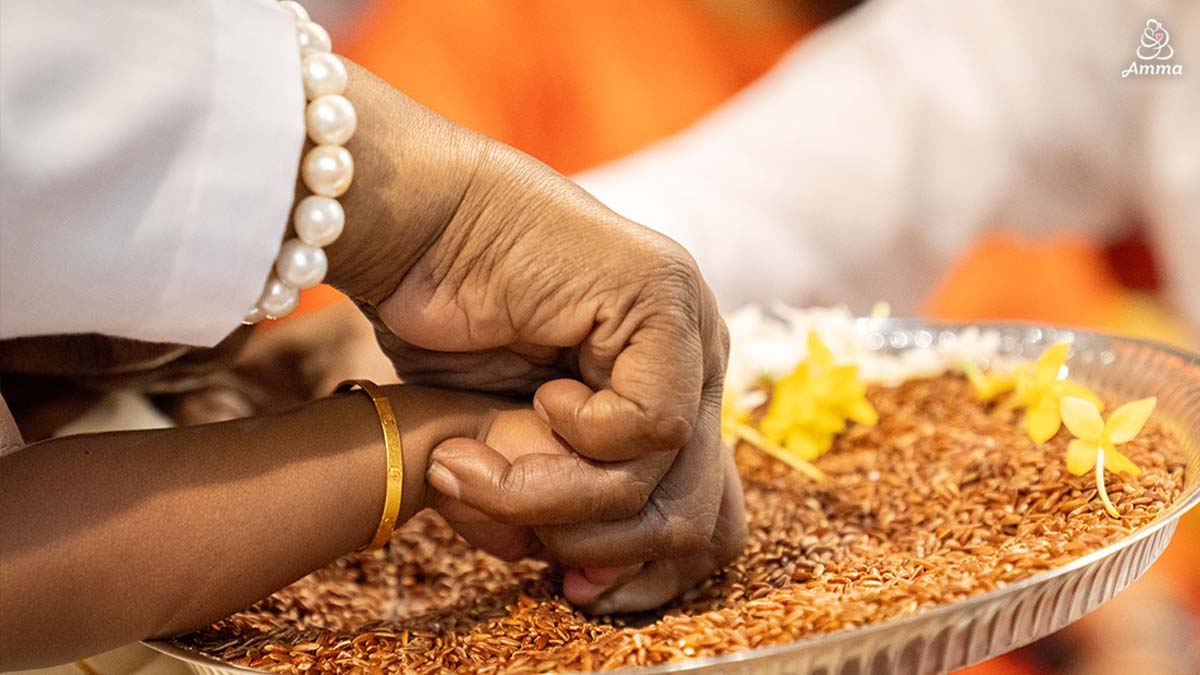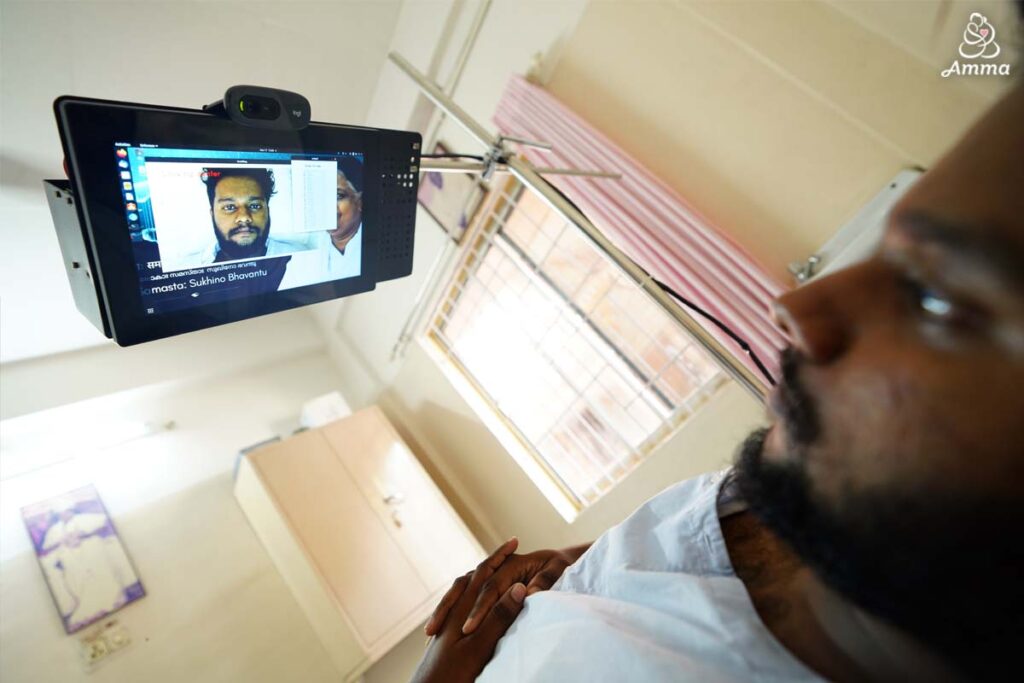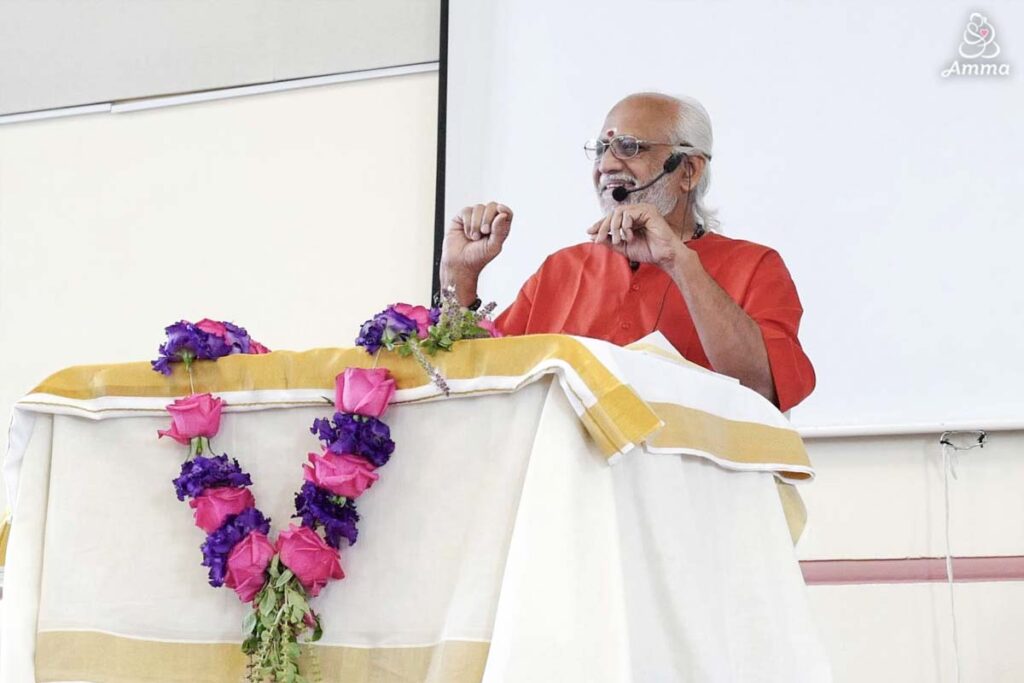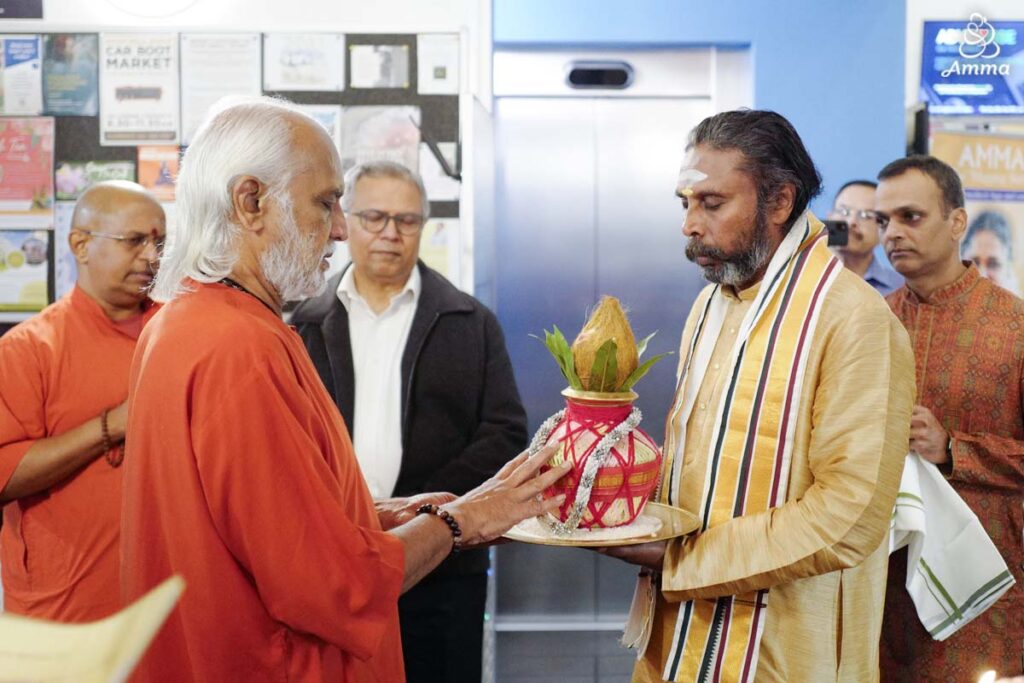During this year’s Navaratri celebrations in Amritapuri, Amma shared in her address how the festival is not just about external rituals. It is an intense spiritual practice that signifies a seeker’s journey towards self-realisation. The nine nights are dedicated to worshipping Durga, the divine in a feminine form as the source and cause of the universe.
People fast and perform various rites to acknowledge the events that occur in the world, alongside the evolution that is happening within the mind. On the tenth day, they gather to honour the triumph of light over darkness, good over evil. In Northern regions it is called Dusshera and in the South, Vijayadashami.
Thousands of devotees from around the world participated in the Vijayadashami program that took place in Amritapuri’s main hall. The gathering included prayers for world peace and happiness for all.
Amma explained that Navaratri’s three forms of the divine feminine—Durga, Lakshmi, and Saraswati—represent the powerful energies of will [ichha], action [kriya], and knowledge [jnana]. Through sincere contemplation, the seeker invites these positive expressions into their own heart.
“Education, wealth, health, and the strength to fight injustice are the most fundamental needs in life. Durga, Lakshmi, and Saraswati bestow these four essentials upon humanity,” said Amma.
“Through the worship of Durga as a sign of power and protection, we are awakening the indwelling Shakti [power]. Only by awakening that Shakti can we wage war against the weaknesses of the mind and come out victorious.”
Vijayadashami’s traditions include the Vidyarambham ceremony where children, typically between the ages of 2 to 5, are initiated into the world of learning. Amma guided hundreds of children by holding their fingers to write their first letters in a plate of rice.
To symbolise this auspicious gift of knowledge, she also led all present in chanting ´Om Hari Sri Ganapataye Namah’—a mantra to signify the 51 Devanagari letters that form the embodiment of Naadarupini Devi, Goddess of Sound.
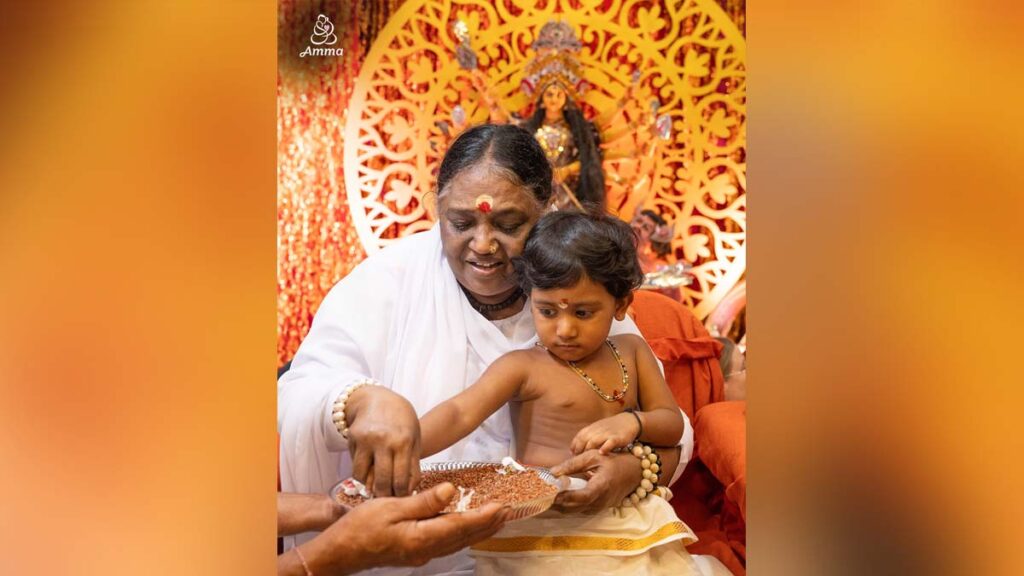
The celebrations were elevated with a captivating Naadopasana, worship through music, led by Swami Amritaswarupananda Puri, Amma’s most senior disciple. It was a grand musical offering to Saraswati as goddess of wisdom, music, art, and learning. More than 400 musicians came together to joyfully express their devotion in this way.
Amma enjoyed the performance with an expression of grace, attentively watching each performer. Her radiant smiles and appreciative applause after every piece filled their hearts with immense gratitude and inspiration.
The ensemble featured 152 tablas, 34 harmoniums, 86 kaimanis [hand cymbals], a guitar, a veena, a gangira [tambourine], a mridangam [drum], a violin, and more than 150 singers. The group played classical Carnatic ragas alongside bhajans in a set that lasted more than 45 minutes, leaving all present in a state of indescribable happiness.
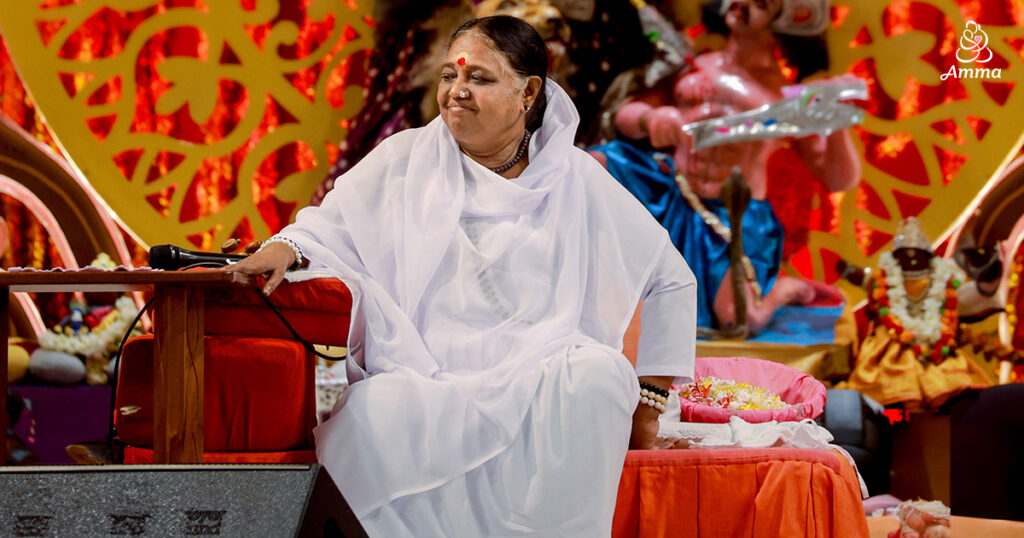

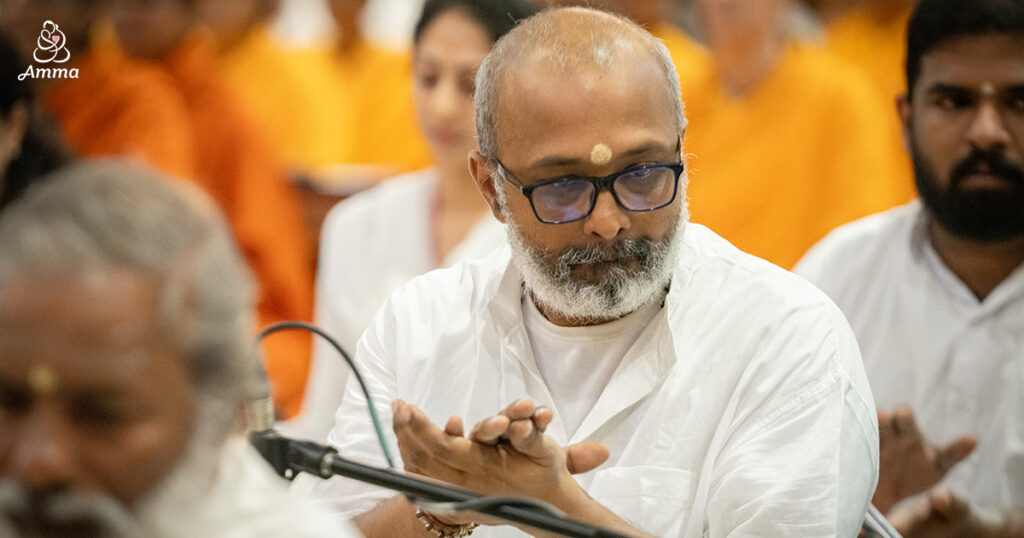
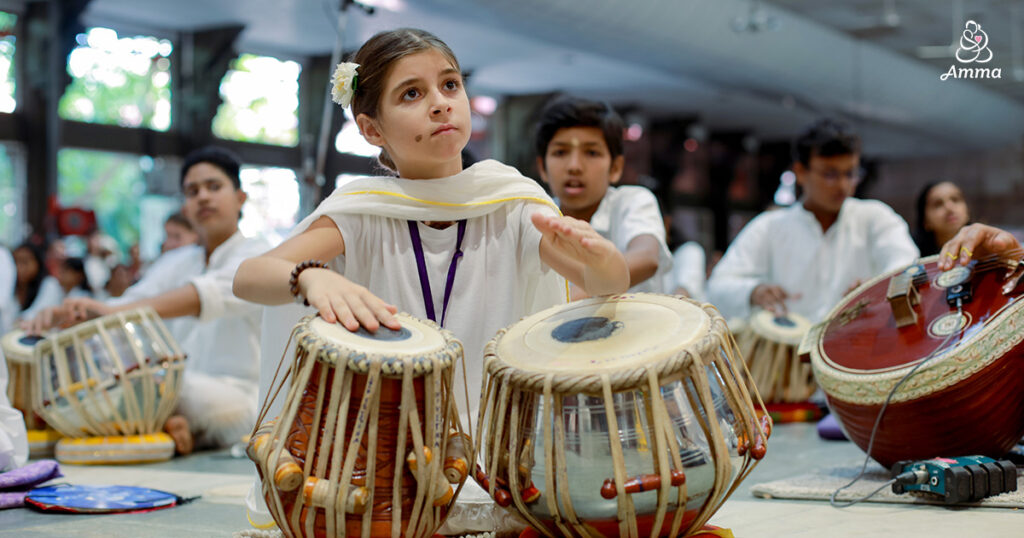

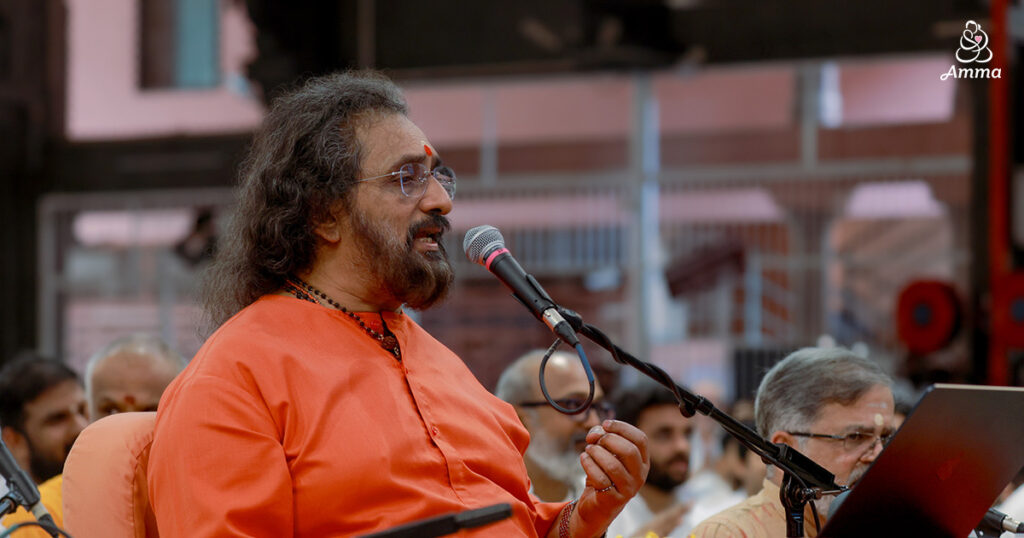

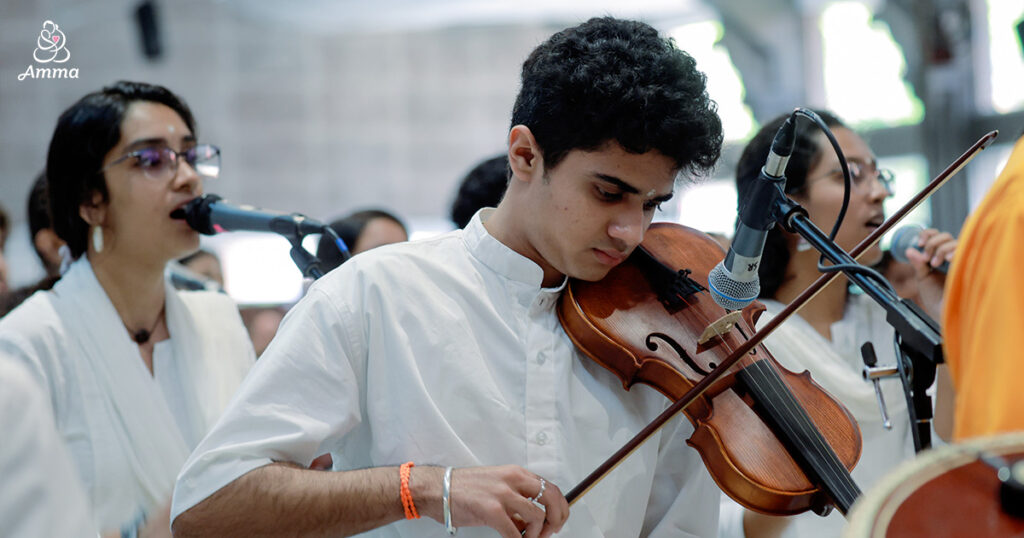
Leading to this vibrant day, Navaratri celebrations began on 3rd October and continued with mounting devotion and enthusiasm each day. In the evening, the Kalari resounded with ancient pujas, bhajans, and chanting of Devi hymns.
A traditional Bommakolu display at the Kali Temple captivated devotees, featuring beautifully arranged statues of animals, birds, plants, humans, devas, and mahatmas. Women priests performed pujas to worship these expressions of the divine.
The final three days of Navaratri Puja are a period of profound significance. People lay their books, musical instruments, and tools of labour on the altar for worship. A powerful sacred space was set up in the Ashram’s main hall with beautiful images of Durga, Saraswati and Amma, placed in an intricate backdrop.
Amma, in accordance with the benign tradition of Amritapuri Ashram, guided everyone in the chanting of mantras, inspiring reverence and surrender to become humble instruments of the Divine.
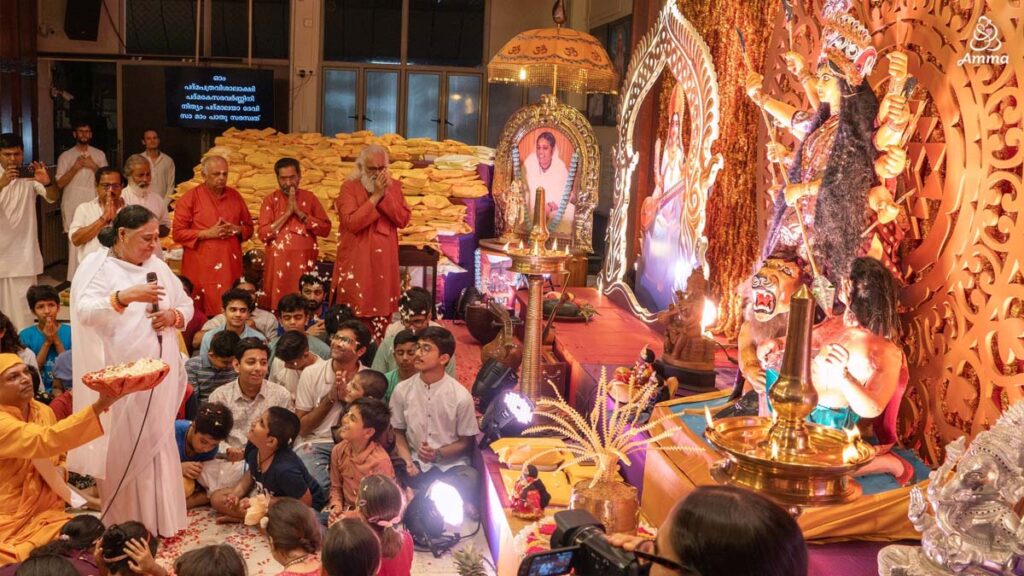
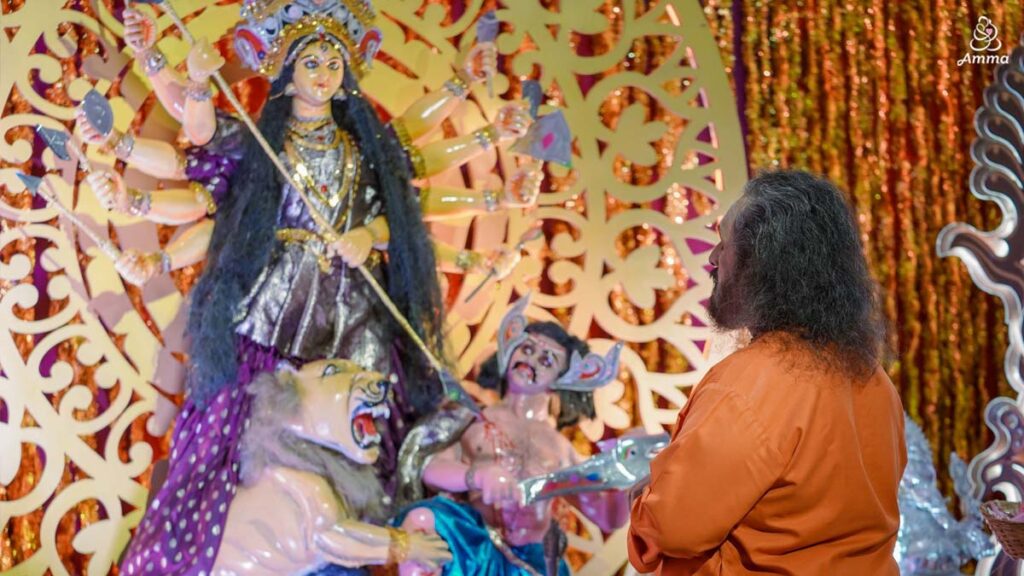
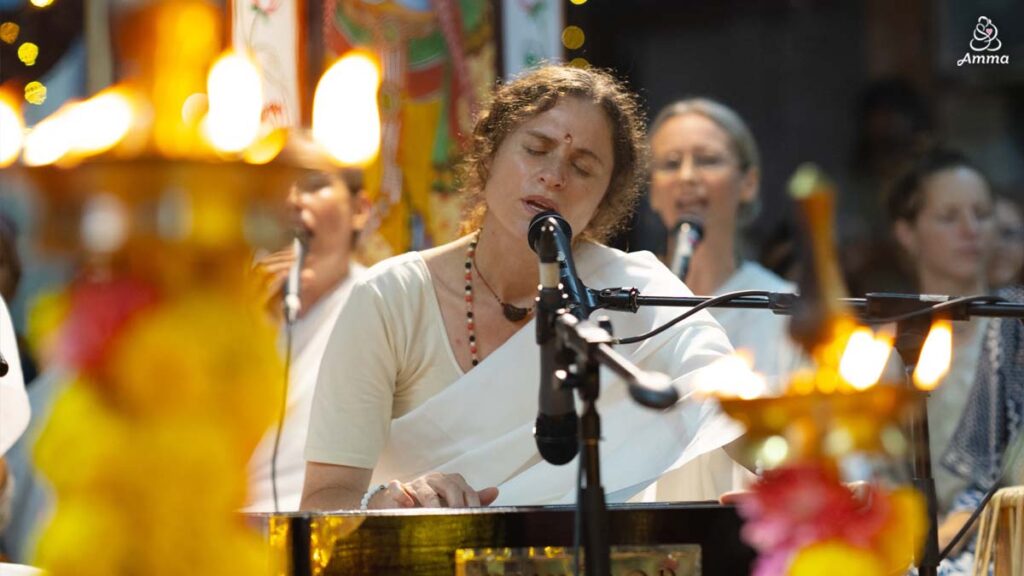
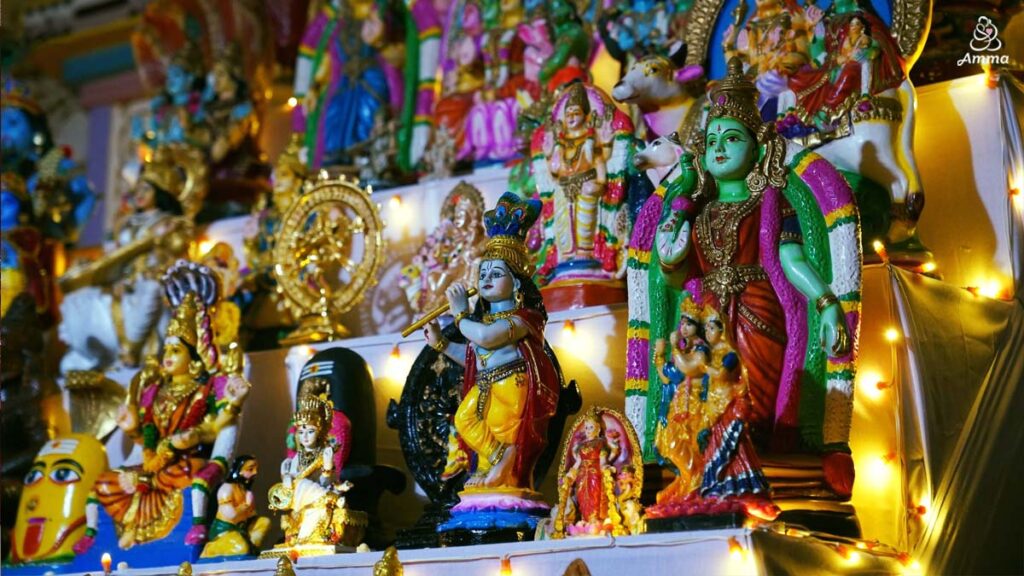
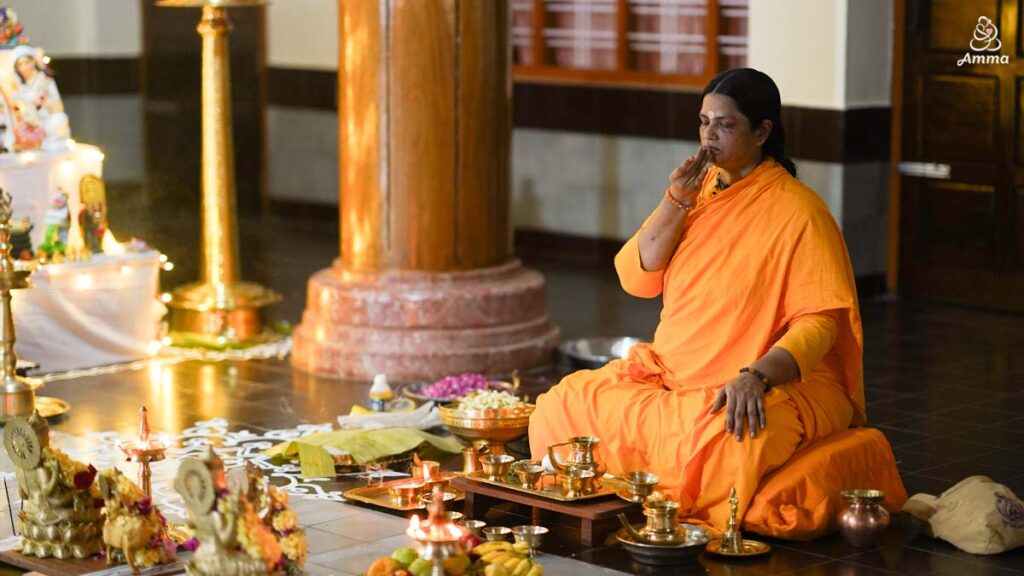




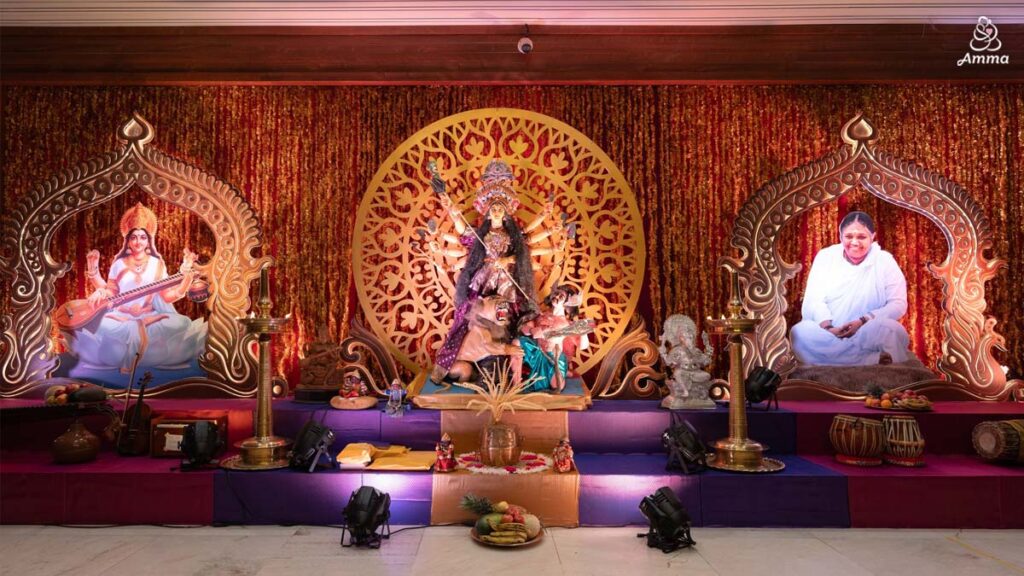
“As part of Navaratri, we keep our books and tools for worship. The seeker performs his actions, viewing himself as a tool in the hands of God. This is the reason why we keep our tools as an offering to God on this day,” explained Amma.
“Those who work with spades and shovels offer those for worship and blessing. Those working with chisels offer those. All these tools are offered and then taken back after the worship.
“The act of doing this symbolises that we should also become tools—just like a paintbrush or a pen—in God’s hands. It indicates a state wherein the notion of doership—the ego—vanishes. It is a state wherein we will definitely attain success.”
Each evening until Vijayadashami, Amma led the devotees in chants, surrounded by children offering flowers at the altar. She imparted simple yet profound instructions to transform every action into an act of worship. Amma inspired everyone, “Surrender is the key. Only then will the flower of your heart blossom.”
Read excerpts from Amma’s message for Vijayadashami.


